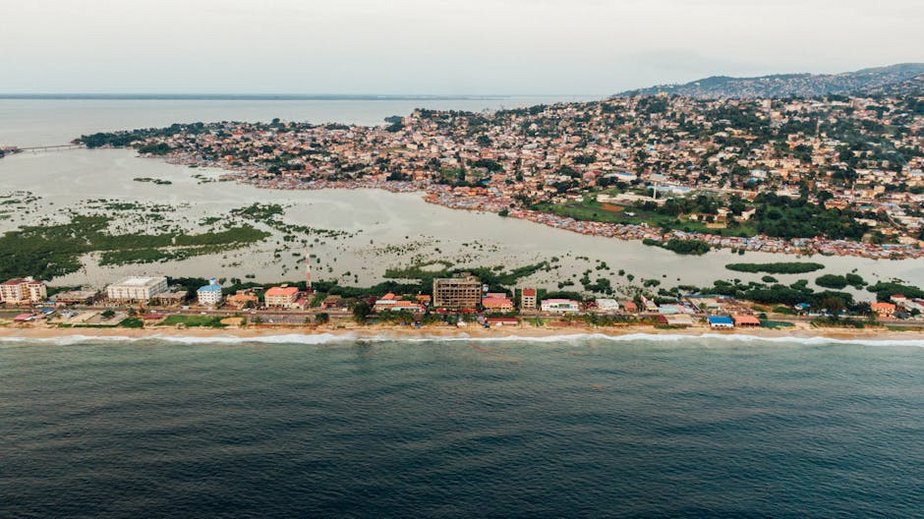Sierra Leone Banana Islands: Tropical Paradise Adventure
The Sierra Leone Banana Islands offer an unspoiled archipelago escape just 25 kilometers from Freetown, featuring Dublin and Ricketts Islands surrounded by turquoise waters and lush rainforests. This destination combines rich historical sites like the former slave trading stations with pristine beaches, diverse marine life, and authentic Temne and Sherbro cultural experiences. Your guide covers essential travel planning, top activities, accommodation options, and practical tips for exploring these tropical gems.
Essential Banana Islands Information
The Banana Islands consist of three main islands—Dublin, Ricketts, and Mes-Meheux—with Dublin being the largest and most developed for tourism. These islands served as important centers during the transatlantic slave trade, with ruins and relics still visible today alongside fishing villages dating back centuries. The local communities maintain traditional lifestyles, offering visitors a glimpse into Sierra Leonean coastal culture through music, dance, and craft workshops.
Geographical Overview and Location
Situated in the Atlantic Ocean off the York Peninsula, the archipelago spans approximately 5 square kilometers with elevations reaching 100 meters above sea level. The islands experience a tropical monsoon climate with distinct wet (May-October) and dry (November-April) seasons influencing travel conditions. Lush mangrove forests, coconut palm groves, and white sand beaches characterize the landscape, supported by coral reefs teeming with marine biodiversity.
Historical Significance and Cultural Heritage
Dublin Island contains the ruins of a 19th-century slave factory operated by Portuguese and British traders, later used as a quarantine station for freed slaves returning to Africa. Ricketts Island features a traditional fishing village where visitors can observe daily life and learn about the indigenous Sherbro people’s customs and traditions. The islands played a role in the Sierra Leone Civil War, with some areas serving as refugee camps, adding layers to their historical narrative.
Key Facts and Statistics
Before visiting, understand these essential details about the archipelago and its infrastructure.
- Population approximately 900 residents across three main villages, primarily engaged in fishing, tourism, and small-scale agriculture for subsistence.
- Accessible via 45-minute boat ride from Kent Beach, with boat transfers costing $20-40 per person round trip depending on group size and negotiation.
- No ATMs or banking facilities available on islands, requiring visitors to bring sufficient cash in Sierra Leonean Leones or US dollars for all expenses.
- Budget travel costs $30-50 daily covering basic guesthouse lodging, local meals, and self-guided beach exploration without organized tours or equipment rental.
- Mid-range budgets of $80-120 include comfortable lodge accommodation, boat transfers, guided historical tours, and snorkeling gear rental with lunch included.
- Luxury experiences at $150-250 feature exclusive beachfront properties, private boat charters, scuba diving excursions, and chef-prepared meals with imported ingredients.
- Sierra Leone National Tourist Board
- Lonely Planet Sierra Leone Guide
Planning Your Sierra Leone Banana Islands Trip
Organizing your Sierra Leone Banana Islands adventure requires careful consideration of seasonal weather patterns, transportation logistics, and accommodation preferences. The dry season from November through April provides optimal conditions with minimal rainfall, calm seas for boat transfers, and excellent visibility for snorkeling and diving. Budget approximately $50-100 per day for mid-range travel including meals, activities, and local transportation, with luxury options reaching $150-250 daily.
Best Time to Visit Banana Islands
Visit between December and March for peak conditions with temperatures ranging from 80-90°F (27-32°C), low humidity, and virtually no rainfall disrupting outdoor activities. Shoulder months in November and April offer slightly lower prices with temperatures of 85-95°F (29-35°C) and occasional brief showers that typically clear within hours. Avoid June through September when heavy monsoon rains make boat transfers hazardous and many facilities close for the season.
Budget Planning and Costs
Your daily expenses will vary significantly based on accommodation style and activity choices.
Essential Preparation Checklist
Pack quick-dry clothing, reef-safe sunscreen, mosquito repellent, and waterproof bags for electronics since humidity averages 80% year-round and tropical insects are prevalent. Bring certified copies of your passport, yellow fever vaccination certificate, and comprehensive travel insurance covering medical evacuation as healthcare facilities are limited on the islands. Book accommodations and boat transfers at least two weeks in advance during peak season, confirming arrangements directly with providers via phone or email.

Alt: “banana-islands-dublin-beach-tropical-palm-trees”
Top Attractions and Activities
Dublin Island’s main beach stretches over two kilometers of pristine white sand bordered by coconut palms, ideal for swimming during high tide and beachcombing at low tide. The historical slave trade ruins near the village provide sobering insight into the islands’ past, with informational plaques explaining each structure’s original purpose and significance. Marine activities dominate the experience, with coral reefs just meters from shore hosting over 200 fish species and several sea turtle nesting areas.
Must-See Highlights
Visit the restored slave factory on Dublin Island, where guided tours explain the site’s history and its connection to Bunce Island farther north in the estuary. The lighthouse on Ricketts Island offers panoramic views of the entire archipelago, accessible via a moderate 30-minute hike through tropical forest with birdwatching opportunities. Snorkel at Cathedral Reef, located just offshore from Dublin Beach, featuring vibrant soft corals, parrotfish, and occasional reef sharks in clear visibility up to 15 meters.
Explore the fishing village on Ricketts Island during early morning hours when fishermen return with their catch, providing photographic opportunities and cultural interaction. Kayak through the mangrove channels between islands, spotting monitor lizards, migratory birds, and sometimes dolphins playing in the surrounding waters. Join a traditional fishing trip with local fishermen using hand lines and nets, learning techniques passed down through generations while helping bring in the day’s catch.
Hidden Gems and Local Favorites
Mes-Meheux Island remains uninhabited and makes for an excellent day trip with picnic supplies, featuring secluded coves and excellent shell collecting along its eastern shore. The natural swimming pool formed by rocks at low tide near Dublin Village provides safe bathing for children and less confident swimmers away from stronger currents. Attend a village storytelling session after dinner, where elders share folklore and historical accounts passed orally through Sherbro and Temne traditions.
Water Sports and Marine Exploration
Scuba diving operators based on Dublin Island offer PADI-certified dives to sites like Three Rocks and Superman’s Flight, featuring dramatic drop-offs and abundant marine life. Stand-up paddleboarding during calm morning hours allows peaceful exploration of the coastline with opportunities to spot sea turtles surfacing for air. Traditional boat building demonstrations occur periodically in Dublin Village, where craftsmen construct fishing canoes using methods unchanged for centuries.
Practical Travel Information
Reach the Banana Islands via organized boat transfer from Kent Beach, approximately one hour drive from Freetown depending on traffic conditions and road quality. Accommodation ranges from basic guesthouses with shared facilities to comfortable lodges with private bathrooms and electricity during specified generator hours. Cellular service remains limited to specific locations on Dublin Island, with Wi-Fi available only at premium accommodations for an additional fee.
| Accommodation Type | Features and Amenities | Price Range (USD) |
|---|---|---|
| Basic Guesthouse | Shared bathrooms, mosquito nets, local meals included, limited electricity | $20-40/night |
| Mid-Range Lodge | Private bathrooms, generator power evenings, restaurant, tour booking | $60-100/night |
| Beachfront Bungalow | Ocean views, solar power, private verandas, included activities | $120-180/night |
| Full-Board Resort | All meals, boat transfers, guided tours, water sports equipment | $200-300/night |


